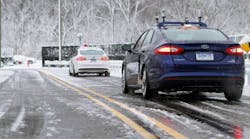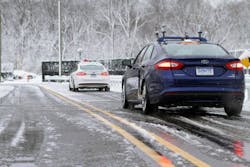So, how does an autonomous vehicle successfully navigate snow-covered streets? I mean, such road surfaces cause vehicles to handle far differently compared to what’s experienced in “good weather” for starters. Also, visual reference points are – obviously – obscured to a high degree in wintry conditions.
What to do?
Well Ford Motor Co. thinks it has worked out a solution of sorts based on recent testing at Mcity (click here for more information on THAT interesting place) that relies on five key steps:
At the end of the day, though, it seems like an awful lot of technology needs to remain up and running so a car can successfully pilot itself over snowy and icy roads. Will it hold up under the wintry strain? We’ll see.




